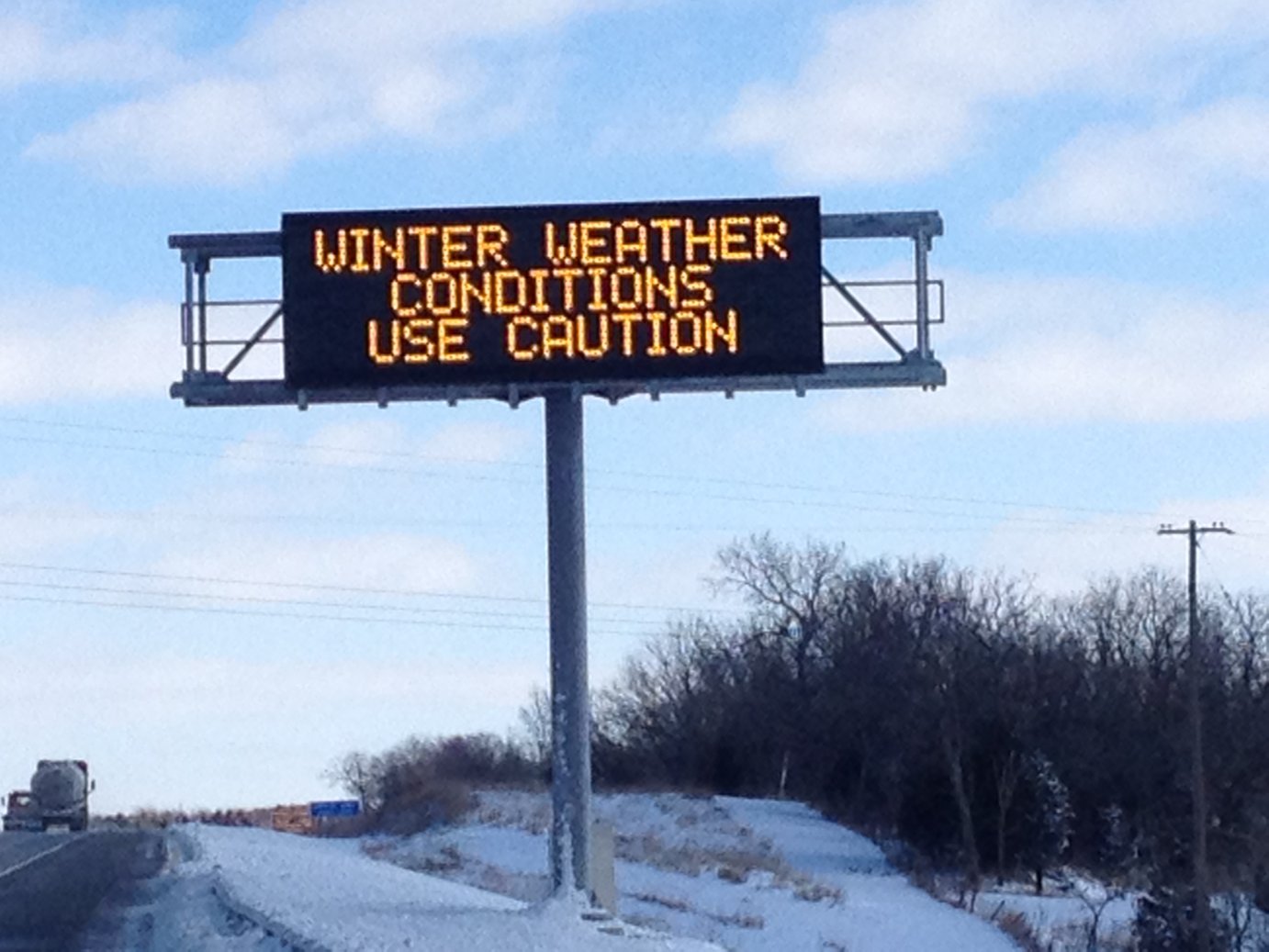
Don't Slide Home in Winter
Save more than a dented fender. Save your life.
Don't be caught off-guard by a winter storm -- be prepared for cold-weather driving.
In addition to the basic safe driving habits practiced all year long – ALWAYS buckle up, drive alert and sober, and drive at a safe and legal speed – special precautions need to be followed during the winter months.
Best Practices
• Make Sure Your Vehicles are Winter-Ready. Winterize your vehicles and get them tuned up to cut the possibility of breakdown – especially if a truck’s been sitting without much use. Check, or have a mechanic check, wipers, hoses, battery, alternator, belts, tires, brakes, exhaust system, lights and fluid levels. And, while it’s already been plenty cold this winter, make sure the heater and defroster are in good working order. • Use Your Winter Driving Skills. Give yourself a little more time. Adjust your speed to the conditions and increase following distances. Be aware that ramps, bridges and overpasses usually freeze sooner than the highway pavement. To see and be seen, turn on your lights. Drive below the posted speed limit, and avoid the use of cruise control on anything but clear and dry pavement. Be aware of "black ice" (roads that look wet but are actually glazed with ice). Also, always keep an eye out for patches of pavement where shadows from trees, bridges or buildings create cold spots where frost, ice or packed snow remain unmelted. Watch for snow-removal equipment on the roadway, and stay a safe distance behind the snowplows. Before passing a snowplow, make sure you have good vision and clearance ahead, allowing plenty of room and watching for the plow's blades that may extend beyond the width of the truck. Don't try to pass snowplows that are working together in tandem pulling snow from the middle of a divided highway. Remain alert; snowplows generally move slower (15 mph - 35 mph) than other traffic, and may be completely obscured at times by blowing snow.
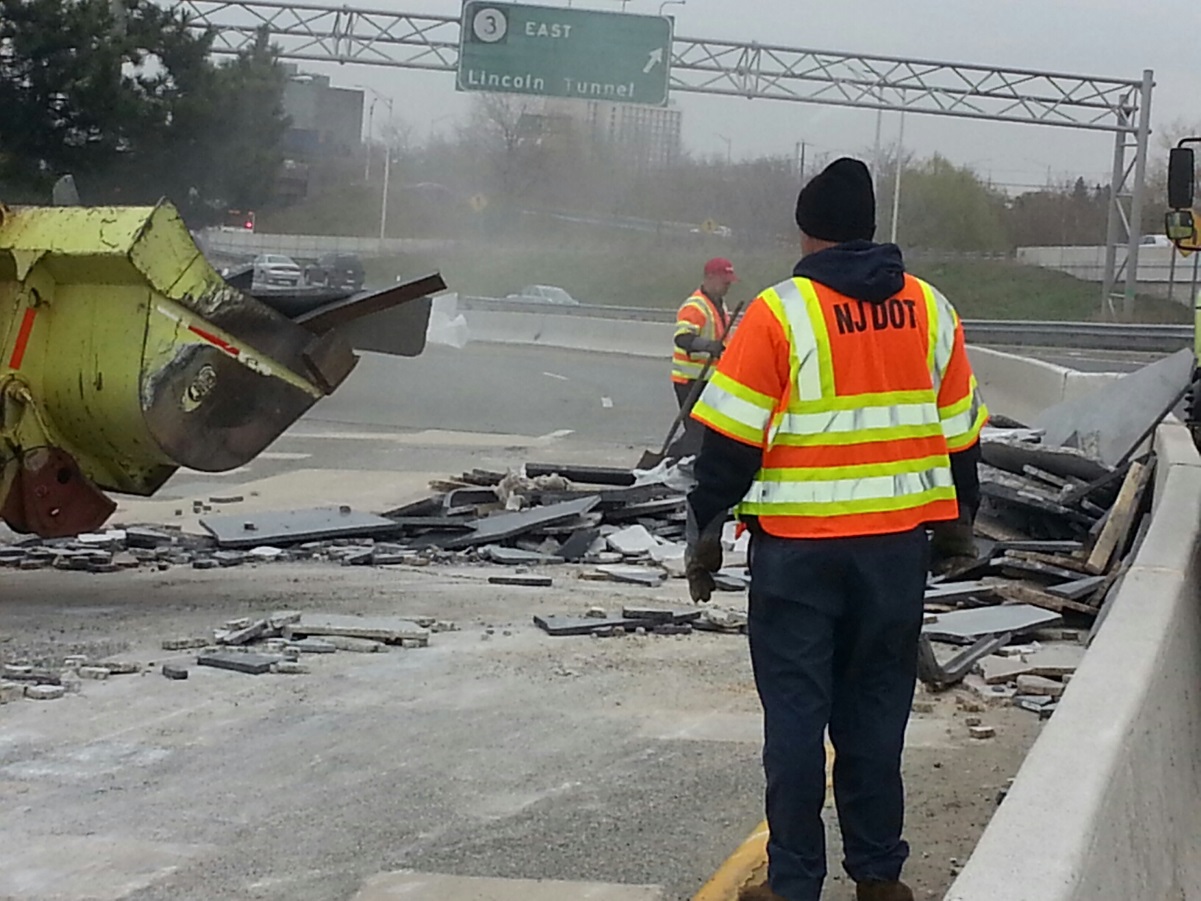
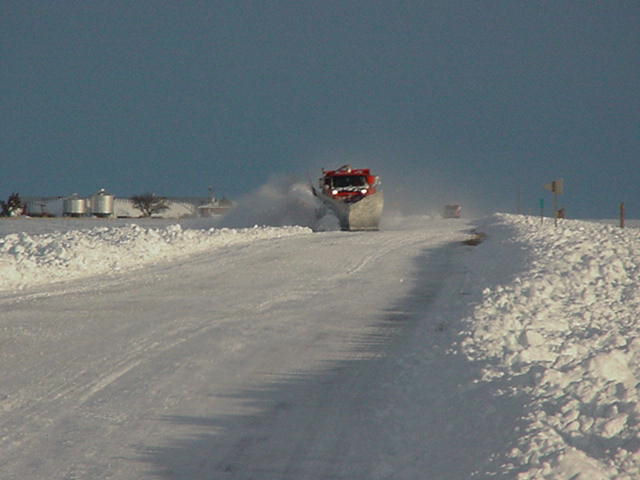
• Keep an Emergency Survival Kit and Supplies in Your Vehicle. With all the wild swings of conditions (and deep snowfalls) this winter, it’s essential to be prepared. The "survival kit" should contain: blankets/sleeping bags; high-energy, nonperishable food; water; flashlight with extra batteries; matches/lighter and candles; warm gloves; small first-aid kit; hat or stocking cap; insulated footwear; and winter coats. Don’t forget the survival kit for your vehicles: Snow shovels; scrapers and snow brushes; sand or strips of carpet for traction; flares/reflectors; tool kits; jumper cables; and a good spare tire, lug wrench and jack. • Stay with Your Vehicle if You Become Stranded In a major storm, staying in your truck will decrease the risk of frostbite or hypothermia and increase your chances of being rescued. As with times of distress in good weather, park on the shoulder if possible, turn your emergency hazard flashers on, and hang a bright-colored distress flag on the radio antenna (if one’s on the truck). If you need to run the engine to warm up, be sure to keep snow away from exhaust pipe and open a window a little to reduce the risk of carbon-monoxide buildup.
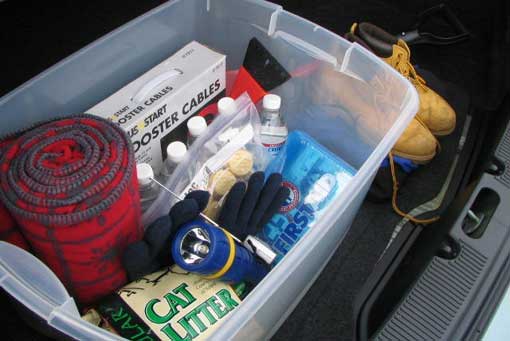
Tips for Safer Winter Deliveries
• Plan ahead. Check for the standard road bottlenecks and possible construction areas along your route, chart locations along the way for fuel and food, and allow extra time for traffic delays. • Inform someone at your destination of your expected arrival time and your travel route. • Clear the bed of the truck or trailer of snow and ice prior to loading slabs. • Turn off engine-braking systems (such as a Jake Brake®) when it’s icy. You need braking on all your axles, not just the drives. This is a common trap for new drivers in icy conditions. • Do not set the trailer brakes after driving in wet and cold conditions, as they tend to freeze to the brake drum. • Be sure to keep your fuel tanks full so you won’t run out. • Use cold-weather additives for diesel fuel in your vehicles. Diesel starts to crystallize (or “cloud”) at +32° F and can gel at +15°F. If your diesel gels, your truck won’t run. When facing winter weather conditions, put an anti-gel additive in your tanks BEFORE refueling. It’s a good idea to stock up on additives ahead of time rather than expecting to buy it at truck stops; they may run out right when you need it.
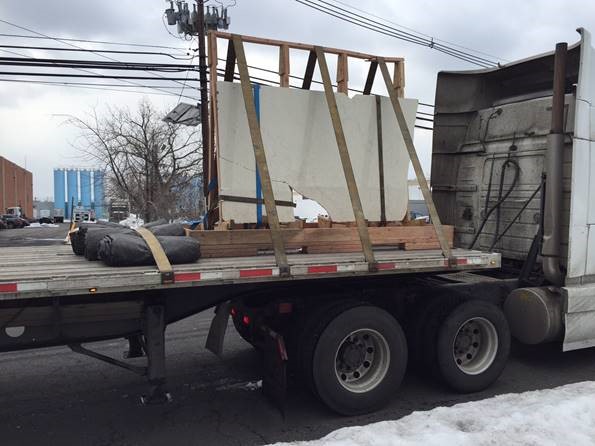
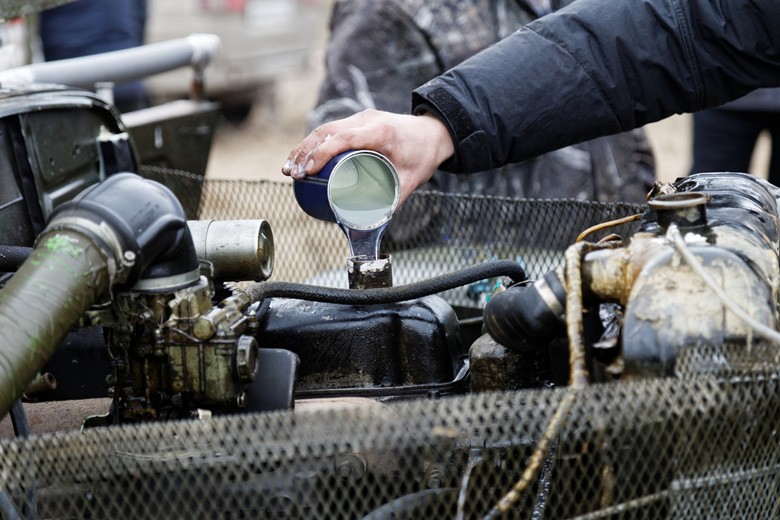
• Prep your cell phone. Add the numbers for local law enforcement (and state patrols), truck service centers and any designated contacts at work. If you do become stranded, call the appropriate emergency numbers. Don’t rely solely on 911 service, which will be swamped during bad weather. • Avoid traveling if severe weather is threatening. Check on weather conditions along your travel route; listen to weather forecasts on local television and radio stations. Check for winter road conditions and current weather information are also available on the Internet (a good place to start is icyroadsafety.com). • Avoid driving in packs. • Two rules of thumb to heed: If cars spin out in the median or shoulder, the roads are bad, when big trucks start going sideways, it’s time to get off the road. • There’s no load worth your life. If you’re on dangerous roadways, find a safe spot to wait it out. Let your logbook gain some hours. If you can’t find a spot in a truck stop, park on a ramp or anywhere out of the way. And try not to park on any incline; even with a slight slope, you’re liable to get stuck.

Reminder: Safety is the responsibility of both management and employees!
All Natural Stone Institute Safety Resources and Courses are offered free at www.uofstone.com and www.naturalstoneinstitute.org/safety.
The information herein is provided by the Natural Stone Institute as a general summary for use in job site toolbox talks and is provided to augment and not substitute for or replace required training under any applicable local, state or federal workplace statute, law or regulation. It is the user’s responsibility to ensure this content is consistent with job site requirements and applicable statutes, laws or regulations prior to use and make any required additions or changes.
